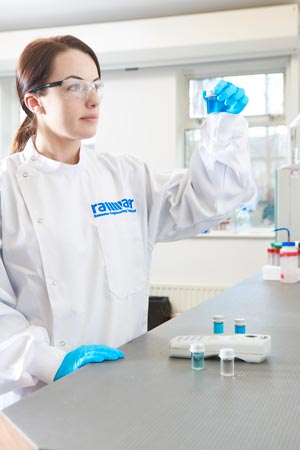We are proud to have played a key role in a major, peer-reviewed study to improve mitigation strategies for oilfield reservoir souring. Working with colleagues from the Integrative Oceanography Division, Scripps Institution of Oceanography, University of California; BP Upstream Technology, London; BP Biosciences Center, San Diego; and the Center for Microbiome Innovation, University of California, the study involved the use of six pressurised up-flow bioreactors at our UK-based reservoir souring research facility.
Establishing precise chemical dosing regimens to mitigate oilfield reservoir souring is not only essential for cost-effective facilities management, but also for the environment. Souring leads to corrosion of topsides’ equipment, presents a health risk to personnel, impacts downstream processes, increases the cost of production and, ultimately, reduces oil revenues. Souring occurs when hydrogen sulfide (H₂S) is generated in oilfield reservoirs. Sulfate-reducing microorganisms – typically introduced through the injection of seawater to maintain pressure during secondary recovery operations – are a main cause of H₂S.
Used to replicate downhole conditions, in order to understand the shift in microbial diversity across different phases of biosouring and mitigation, each of the six Rawwater pressurised bioreactors was packed with ‘pre-soured’ sand, and then injected with seawater.
Three of the pressurised bioreactors were also saturated with medium crude oil that was free from natural gas. The pressurised bioreactors were operated under anoxic (anaerobic) conditions at a pressure/temperature of 18.27MPa and 30°C to simulate the environment near the wellbore of an injector. The study phases were designed to mimic the conditions for sulfide production, followed by nitrate control, the cessation of nitrate control, and then mitigating for rebound production through renewed nitrate control.
Analysis of samples collected during the various stages of the study enabled one of the most detailed reviews of different phases of souring and mitigation of microbial structures in seawater-wetted [pressurised bioreactor] columns (SWCs) and oil-wetted [pressurised bioreactor] columns (OWCs). It provided valuable insight into microbial diversity, including particularly abundant bacterial populations, mitigation techniques and their effectiveness. The persistence of certain microbial populations throughout the testing phases was also investigated to better understand their ability to adapt to changing conditions.
The full, peer-reviewed research article can be read on frontiersin.org at: https://www.frontiersin.org/articles/10.3389/fmicb.2020.585943/full
Reservoir souring services from Rawwater
Understanding if, when and to what extent a reservoir will sour is essential for cost-effective facilities management. Our expertise in reservoir simulation and souring forecasting gives operators the confidence to make informed decisions relating to production strategies, mitigation and chemical dosing.
Our investment in creating what is widely considered to be the world’s most advanced pressurised bioreactor facility to study microbiological souring has resulted in almost 500 years’ worth of souring data. DynamicTVS©, our predictive oilfield reservoir souring modelling program, uses operational data from all phases of oil production to forecast H₂S production over the lifetime of a reservoir. Together, our considerable expertise, pressurised bioreactor data and souring modelling capability present operators with the opportunity to save millions of dollars.
Read more about our souring services.


